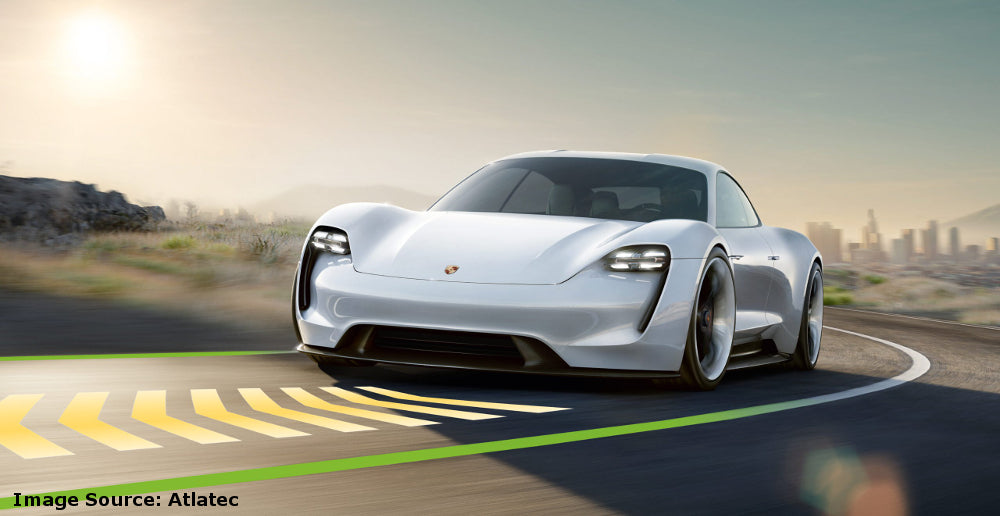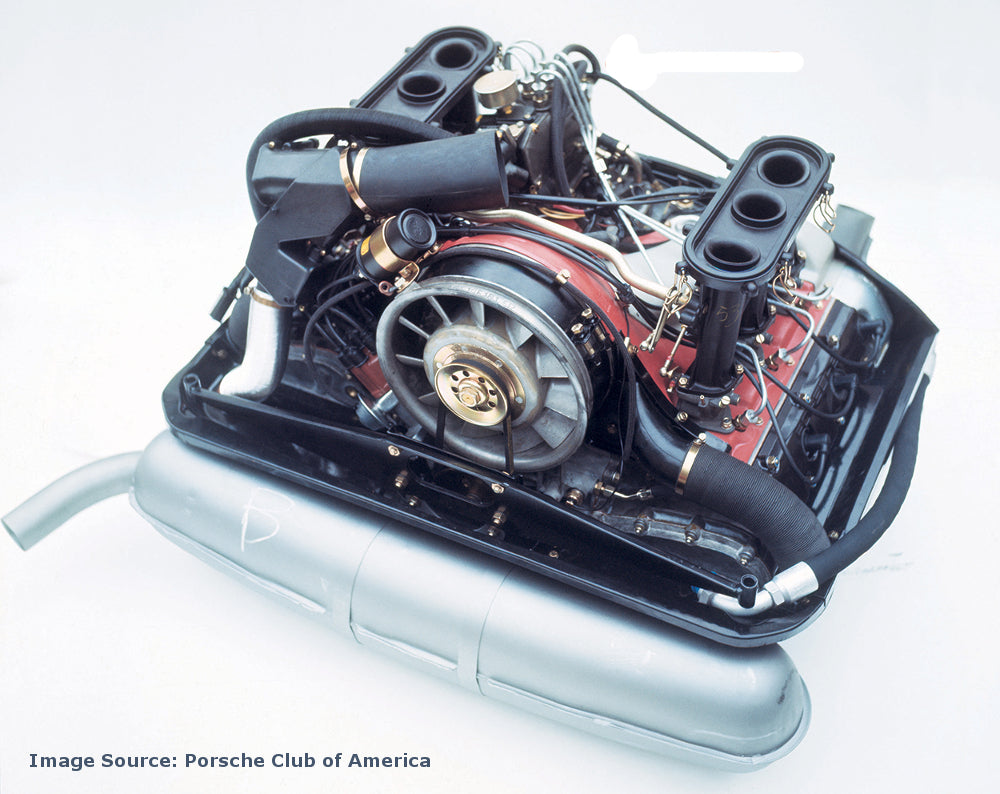With about 1.4 million people losing their lives in traffic accidents across the world every year, regulators and manufacturers are turning their attention to a host of rapidly evolving technologies to significantly reduce the carnage. In Europe, the EU Commission is busy incorporating its “Vision Zero” into the union’s Road Safety Policy Framework with the stated aim of eliminating all road fatalities by 2050.
Of key importance in achieving this objective is equipping more vehicles (passenger and commercial) with Advanced Driver Assist Systems (ADAS). These active safety systems have been enabled by advances in technologies, such as sensors and connectivity. For instance, Porsche’s “Porsche Connect” system that allows vehicles to connect to the cloud to access services for the remote control of vehicle functions, and looking towards the future, Porsche’s 5G-powered real-time warning system currently under development.

Advanced Driver Assist Systems Are Not Self-driving Systems
It is, however, important to differentiate between ADAS and Automated Driving Systems (ADS), which are normally associated with upcoming autonomous self-driving vehicles. It is for this reason that the SAE has developed the J3016 standard defining the incremental levels of automation and technologies that will see ADAS transition into ADS in many vehicles in the future.
This article looks at the operation of current ADAS systems and what the future holds for the technology.
The Levels Of Automation That Make Up ADAS
Whilst J3016 is meant to define the various levels of driving automation for regulators, those in the automotive industry, and supporting service providers, such as insurers, it is nevertheless an easy-to-follow guide to ADAS functionality and the trajectory of future ADAS and ADS technologies.

In the internationally accepted SAE standard, Levels zero, one, and two (L0, L1, L2) are defined as ADAS systems, with what is increasingly being referred to as L2+ the highest level of ADAS functionality. The fact that L2(+) systems offer a high degree of automation, many misconstrue this as the threshold for autonomous self-driving. This is illustrated in a well-known EV manufacturer’s controversial “self-driving” system that is officially classified as an L2 ADAS technology but widely perceived as supporting ASD at a much higher level. Unfortunately, this “auto-pilot” perception has had fatal consequences.
In its most basic form, Advanced Driver Assistance Systems encompass well-established systems such as Anti-lock Braking (ABS) and Electronic Stability Programs (ESP), with newer systems such as autonomous emergency braking, forward-collision warning, lane keep assist, lane departure warning, lane change assist, blind spot monitoring, night vision and adaptive cruise control rapidly expanding the list of ADAS functions.
The defining factor in all ADAS systems, and what differentiates them from ASD, is that they assist the driver in controlling the car. At no time do they take over from the human to drive the car. So whilst Lane-keeping and Adaptive Cruise Control may operate simultaneously to automatically steer and accelerate/decelerate a vehicle under pre-defined conditions, the driver remains in control, and importantly, in the eyes of the law and insurers, responsible and liable for the outcome.
This makes the much vaunted L3 a bit of an enigma. These systems are capable of actually piloting the car, but only until they cannot. The problem is that there is no absolute way of telling when the self-driving system will become overwhelmed by a scenario it has not been trained for. These are known as ‘edge-cases’ and are akin to a driver approaching a thick cloud of smoke drifting across the road where a decision has to be made whether to slow down or stop or proceed through the cloud. There are no hard and fast rules governing this.
For this reason, these systems demand the driver’s full engagement at all times.
How Do Porsche Advanced Driver Assist Systems Work?
In replicating the human’s processing ability that requires input from our various senses, ADAS relies on a host of electronic sensors, often referred to as a sensor suite.

These sensors are meant to give the vehicle a spatial understanding of its surroundings at all times. So, similar to our senses of sight, sound, and smell that each have a unique function, so too do sensors used in ADAS. Each one has a specific strength and function in making a decision.
Thus, cameras are very good at discerning color such as displayed at traffic lights, but not so good at picking out detail in poor visibility, such as encountered at night time. On the other hand, radar is great at picking out objects and trajectories in most lighting conditions, but the shorter wavelength RADAR does not allow the detection of small objects or provide the system with a precise image of an object.
Therefore, a sensor suite is typically made up of:
- RADAR (an acronym for Radio Detection and Ranging) - is a device capable of detecting objects at long range through the use of electromagnetic waves that measure the distance or trajectory of an object.
- Lidar (which stands for Light Detection and Ranging) - is a remote sensing method that uses light in the form of a pulsed laser, instead of electromagnetic waves, to measure range enabling the construction of a 3D image of the vehicle’s surroundings.
- Cameras – both mono and stereo can be equated to the human eye and provide the ADAS with the detail required to make decisions.
- Ultrasonic sensors that mimic echolocation used by bats, transmit high-frequency sound waves to gauge the distance of objects at a short range.
The information generated by these sensors, in higher-level ADAS systems, is typically ‘fused’ in a central onboard processor that compares the information with data it has been trained to recognize and respond to.
Of course, in simplistic systems, such as ABS, the information from the sensors (wheel speed, in this case) is quickly deciphered and responded to without the input of other sensors or the accompanying fusion.
In contrast, ADAS systems such as Automatic Emergency Braking (AEB) and Autonomous Cruise Control (ACC), which both also rely on the braking system, require the input of an array of sensors eg. wheel-speed sensors, cameras, radar, and on some vehicles, even Lidar, to perform the maneuver.
This, in the case of AEB systems such as Porsche’s Active Safe, found on the Porsche 911, amongst other models, is necessary because the system needs to accurately measure the distance to an object or vehicle in front of it and intervene in case of an emergency.
Thus even if the driver is applying brakes the system may increase line pressure through an actuator controlled by the ECU, if it senses that retardation is insufficient.
So, if ADAS can steer a car (lane keeping) and keep a following distance (ACC) and even brake a vehicle in an emergency what might the future hold?
The Future Of ADAS In Porsche Cars
The most important point to understand is that, in the context of Porsche’s sports car heritage, the objective is never to take away the skilled human input, but rather to add an additional layer of safety to counteract human fallibility.
Consequently, the future will focus on improving safety, including drivers’ distraction in monotonous situations such as slow-moving traffic on highways. In this case, most drivers would probably welcome a ‘chauffeur service’ that would allow them to focus on other activities, maybe even watch a video, without the risk of an accident.
As per the SAE chart above, the building blocks of this functionality already exist. The future challenge is to make sure they work every time, in all situations without fail, and to make them affordable so that all vehicles can benefit from the technologies.
In an endeavor to both improve the performance and reduce the costs of ADAS, Porsche, in conjunction with TriEye, is working to put short-wave infrared (SWIR) sensors in ADAS and self-driving systems.

According to several online reports, TriEye is collaborating with Porsche on SWIR sensors to improve the performance of ADAS and future self-driving systems. The companies hope to improve those systems’ ability to accurately detect objects on the road in situations with limited visibility.
These SWIR imaging sensors can capture crystal-clear frames in fog and dust, as well as in low light.
Even though Advanced Driver Assist Systems are seen as a bridge to fully autonomous self-driving technology, for sports car manufacturers, such as Porsche, ADAS offers an opportunity to make their cars safer and even more rewarding to drive.
Did you enjoy this article? Avoid missing future publications by subscribing to this blog's RSS feed using
https://frazerpart.com/blogs/technical-articles.atom






